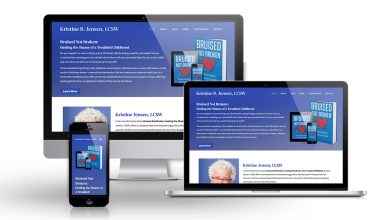Why you should compare PowerPoint Documents

PowerPoint Documents: In today’s digital age, PowerPoint presentations have become a staple in business, education, and various other fields. Whether you’re creating sales pitches, educational materials, or project proposals, PowerPoint documents are essential for conveying information effectively. However, as projects evolve and collaboration becomes more widespread, the need to compare PowerPoint documents arises. In this comprehensive guide, we’ll explore the ins and outs of compare PowerPoint documents providing you with valuable insights and practical tips to streamline your workflow.
Understanding PowerPoint Document Comparison
Before delving into the intricacies of comparing PowerPoint documents, let’s first establish what exactly this process entails. PowerPoint document comparison refers to the act of identifying differences between two or more presentations. This can include changes in content, formatting, layout, and more. The primary goal of comparison is to ensure accuracy, consistency, and version control across multiple iterations of a document.
Methods for Comparing PowerPoint Documents
There are several methods available for comparing PowerPoint documents, each with its own advantages and limitations. The most common approaches include manual comparison, utilizing built-in PowerPoint features, and leveraging third-party software solutions.
Benefits of Comparing PowerPoint Documents
The benefits of comparing PowerPoint documents are manifold. By conducting thorough comparisons, users can ensure that all stakeholders are working with the most up-to-date information, reducing the risk of errors and misunderstandings. Additionally, comparison allows for the efficient identification of changes and revisions, facilitating seamless collaboration and decision-making processes.
How to Compare PowerPoint Documents
The process of comparing PowerPoint documents can vary depending on the method chosen. For manual comparison, users can visually inspect two presentations side by side, noting any discrepancies manually. Alternatively, PowerPoint offers built-in features such as “Compare” and “Combine” to streamline the comparison process. Additionally, there are a variety of third-party software options available, each offering unique features and functionalities.
Factors to Consider When Choosing Comparison Methods
When selecting a method for comparing PowerPoint documents, it’s essential to consider factors such as the complexity of the documents, collaboration needs, and budget constraints. For simple presentations with minimal changes, manual comparison may suffice. However, for more complex projects or collaborative environments, investing in third-party software may be necessary.
Best Practices for Effective Comparison
To ensure the effectiveness of the comparison process, it’s crucial to establish standardized procedures, implement version control measures, and maintain open lines of communication among team members. By adhering to best practices, users can minimize errors and maximize efficiency when comparing PowerPoint documents.
Challenges in PowerPoint Document Comparison
Despite its benefits, comparing PowerPoint documents can present several challenges. Common issues include formatting discrepancies, version control issues, and time constraints. However, with careful planning and the right tools, these challenges can be overcome.
Overcoming Challenges and Maximizing Efficiency
To address formatting discrepancies, users can utilize tools and features designed specifically for comparison purposes. Implementing effective version control measures, such as naming conventions and version history tracking, can help mitigate version control issues. Additionally, adopting time-saving strategies, such as batch processing and automation, can streamline the comparison process and increase overall efficiency.
Real-World Applications and Case Studies
Numerous real-world applications demonstrate the value of effective PowerPoint document comparison. From multinational corporations to small businesses, organizations across various industries have benefited from streamlined workflows and improved collaboration processes. By studying these success stories and learning from common pitfalls, users can glean valuable insights into best practices and implementation strategies.
Future Trends in PowerPoint Document Comparison
Looking ahead, advancements in comparison technology are expected to drive further innovation in the field of PowerPoint document comparison. Integration with other software solutions, such as project management tools and cloud-based platforms, will enhance interoperability and streamline workflow integration. As the landscape continues to evolve, organizations can expect increased efficiency and productivity in their document comparison processes.
Conclusion
In conclusion, comparing PowerPoint documents is a vital aspect of modern workflow management, enabling organizations to maintain accuracy, consistency, and version control across multiple iterations of a document. By understanding the methods, benefits, and challenges associated with comparison, users can optimize their workflow and achieve greater efficiency in their day-to-day operations.









